Veterans Affairs (VA) rates conditions like instability and other medical issues related to the ankle based on the severity of symptoms, treatment options, and how much a disability limits daily activities.
The VA uses the Rating Schedule for Musculoskeletal Systems system to evaluate these disabilities and determine how best to rate them in terms of compensation. Understanding this system and how a disability is rated can help veterans receive the care they need.
In this article, we will discuss how the VA rates conditions related to the ankle. Let’s Get Started.
What is Ankle Instability?
Ankle instability is a common condition caused by an ankle sprain. It occurs when the joint does not receive sufficient stability from the surrounding ligaments and tendons, which can cause pain, swelling, tenderness, instability, and/or difficulty walking. Instability can lead to chronic problems such as arthritis and other joint damage.
Causes of Ankle Instability
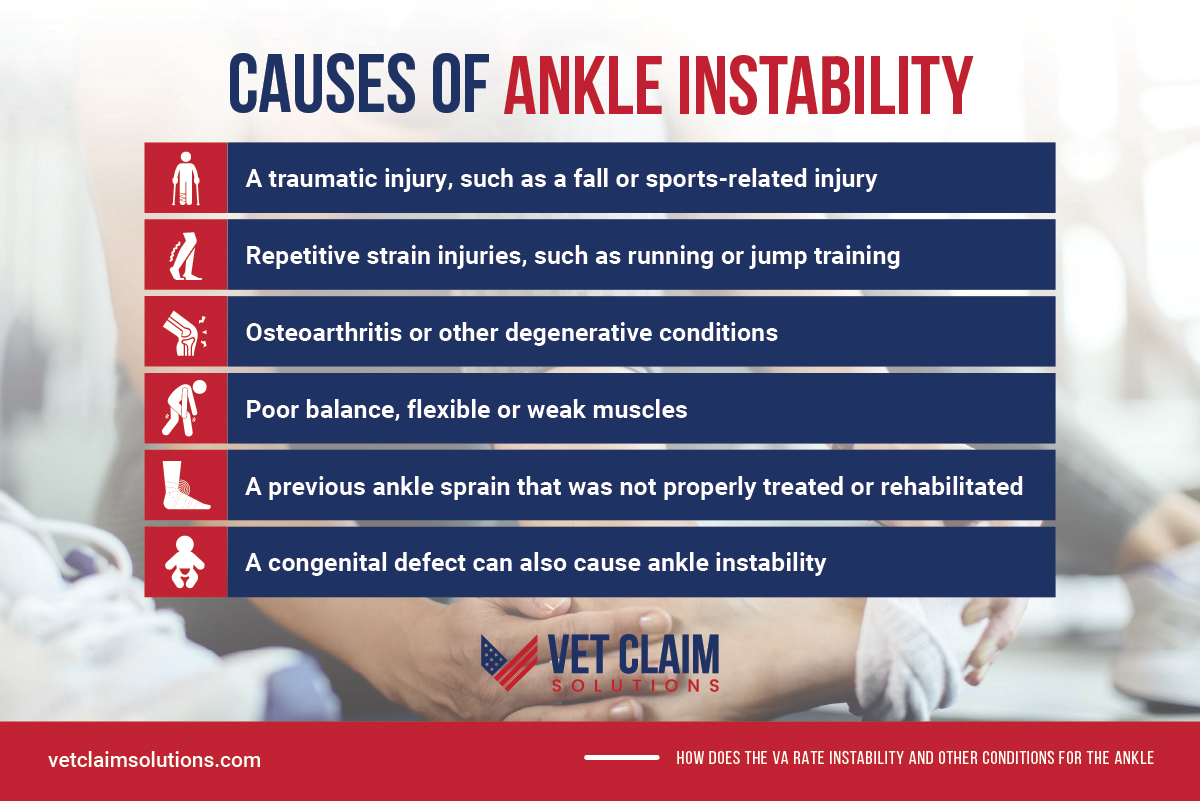
Ankle instability can be caused by a variety of factors, such as:
- A traumatic injury, such as a fall or sports-related injury
- Repetitive strain injuries, such as running or jump training
- Osteoarthritis or other degenerative conditions
- Poor balance, flexible or weak muscles
- A previous ankle sprain that was not properly treated or rehabilitated
- A congenital defect can also cause ankle instability
Symptoms of Ankle Instability
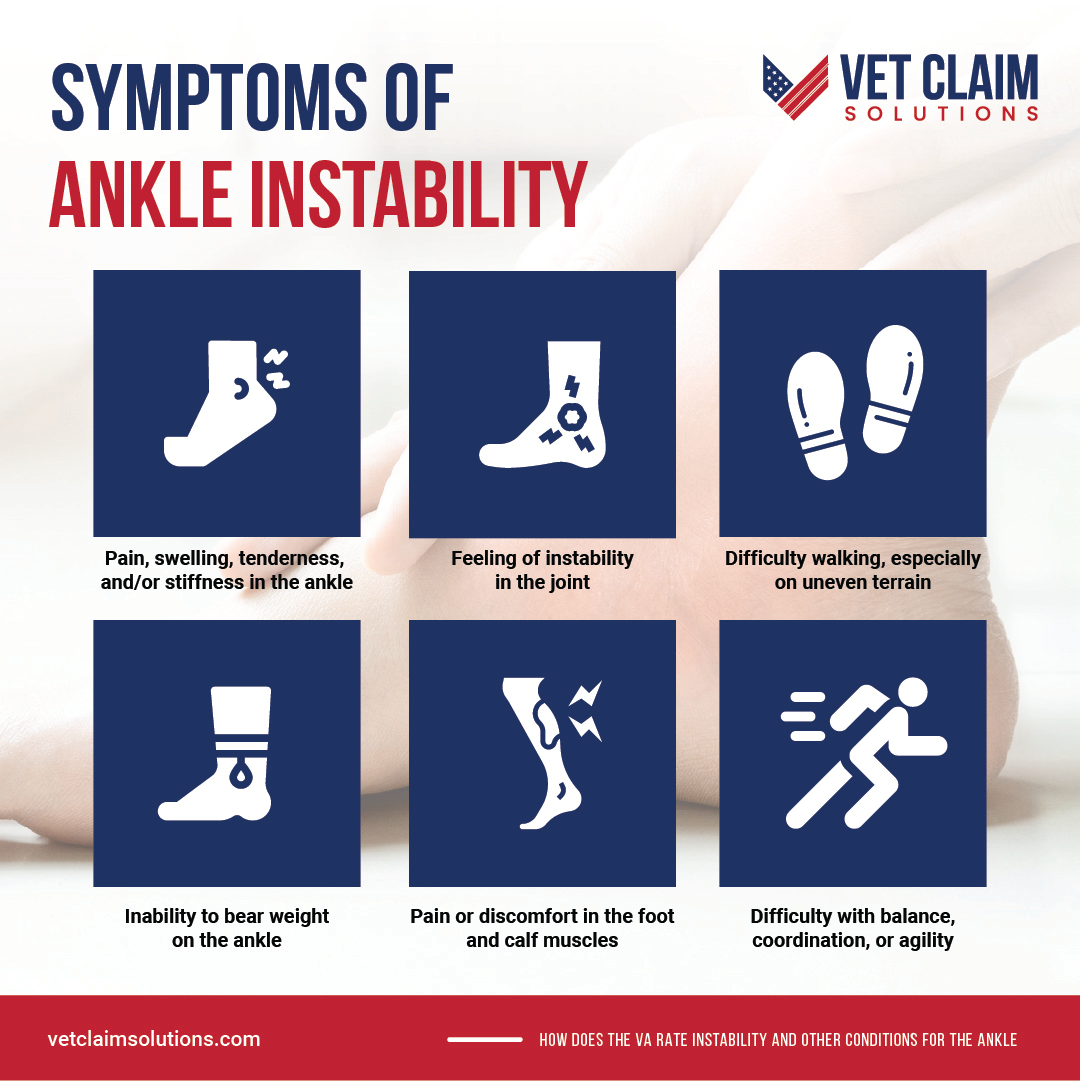
Common symptoms of ankle instability include:
- Pain, swelling, tenderness, and/or stiffness in the ankle
- Feeling of instability in the joint
- Difficulty walking, especially on uneven terrain
- Inability to bear weight on the ankle
- Pain or discomfort in the foot and calf muscles
- Difficulty with balance, coordination, or agility
How Does VA Rate Ankle Disabilities?
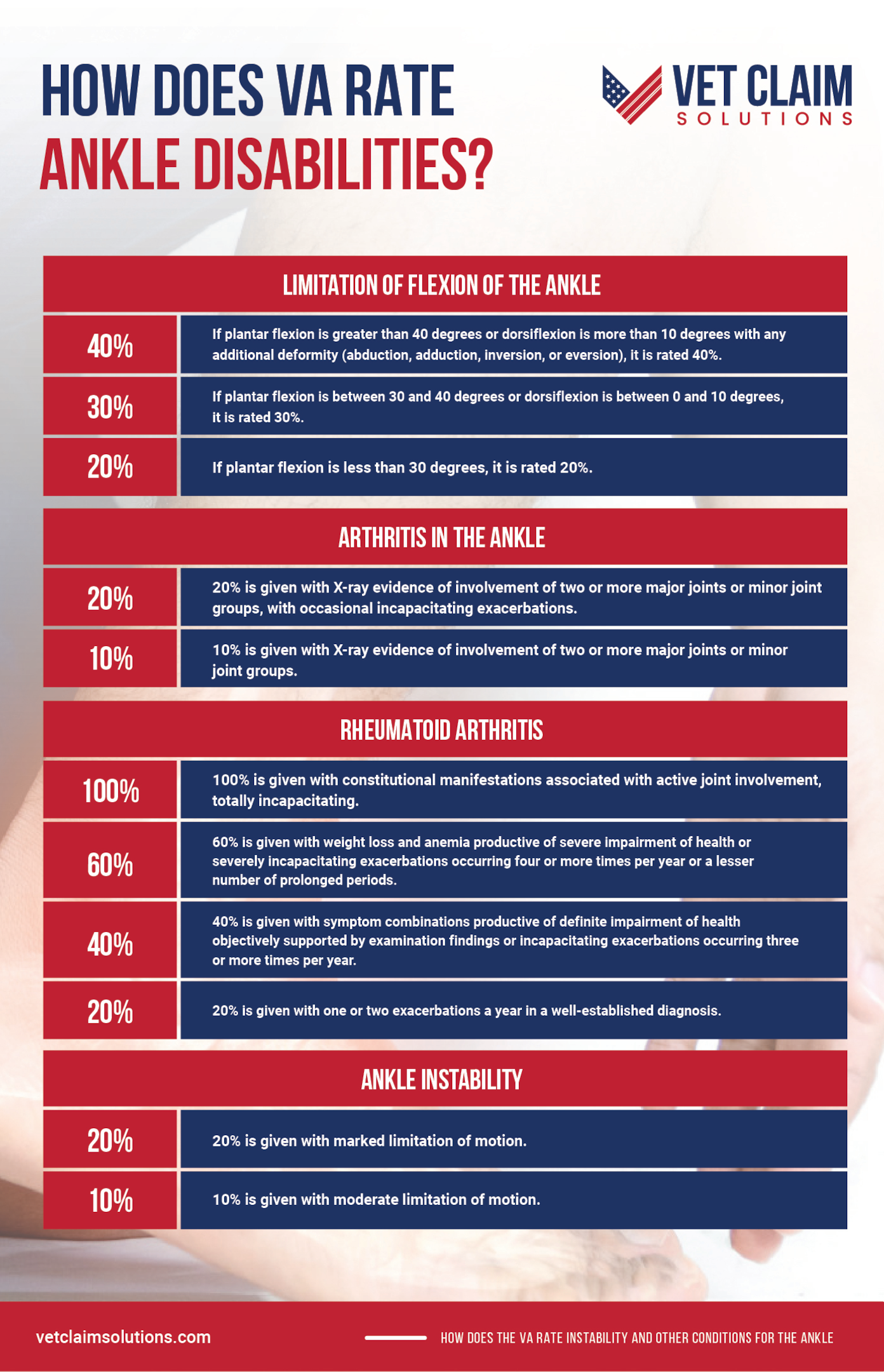
The U.S. Department of Veterans Affairs (VA) recognizes ankle conditions as disabilities that impact the musculoskeletal system, under 38 CFR § 4.71a regulations.
Limitation of Flexion of the Ankle
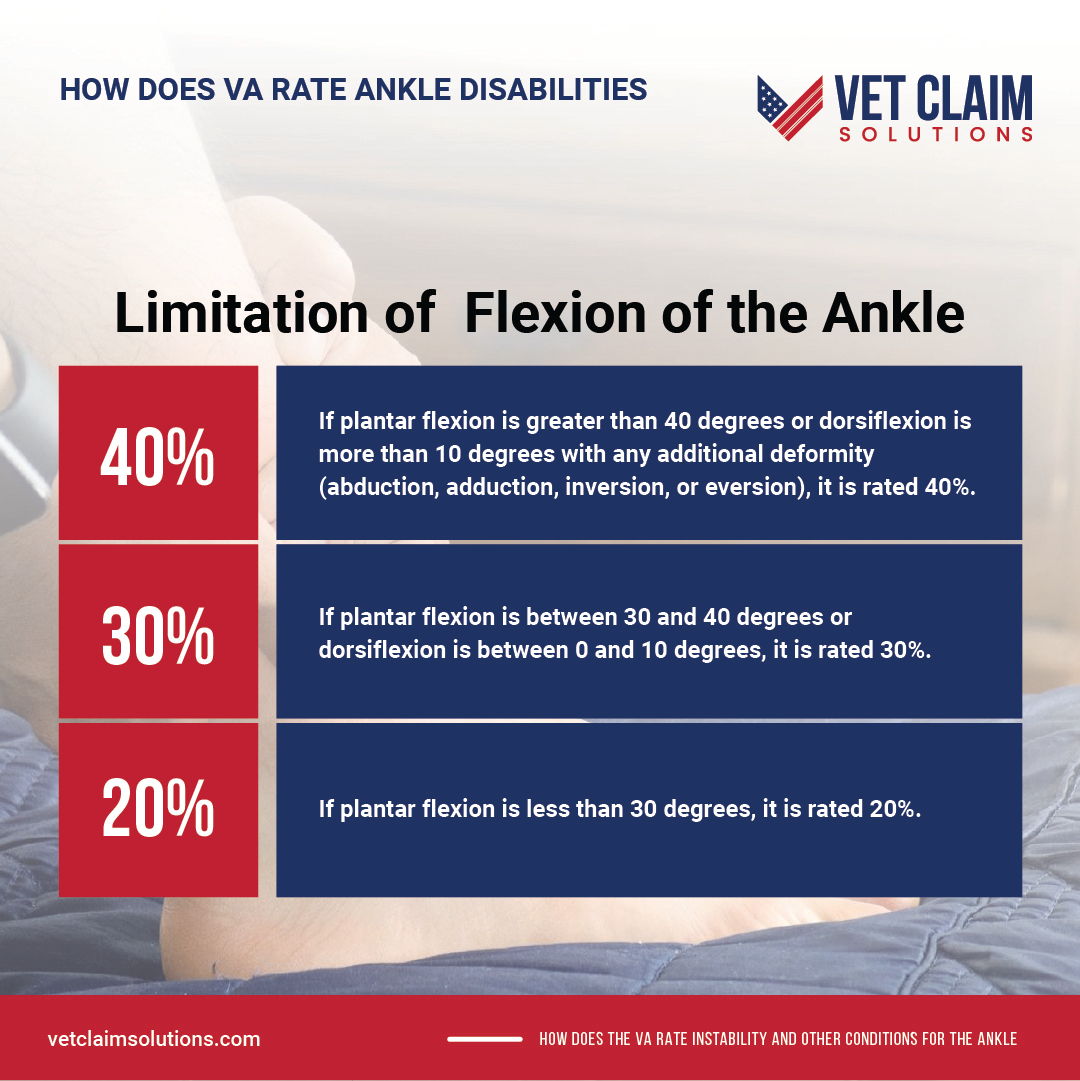
As indicated under the diagnostic code (DC) 5270, ratings for ankle tendonitis are determined based on the severity of ankylosis present in the affected ankle.

If plantar flexion is greater than 40 degrees or dorsiflexion is more than 10 degrees with any additional deformity (abduction, adduction, inversion, or eversion), it is rated 40%.

If plantar flexion is between 30 and 40 degrees or dorsiflexion is between 0 and 10 degrees, it is rated 30%.

If plantar flexion is less than 30 degrees, it is rated 20%.
Arthritis in the Ankle
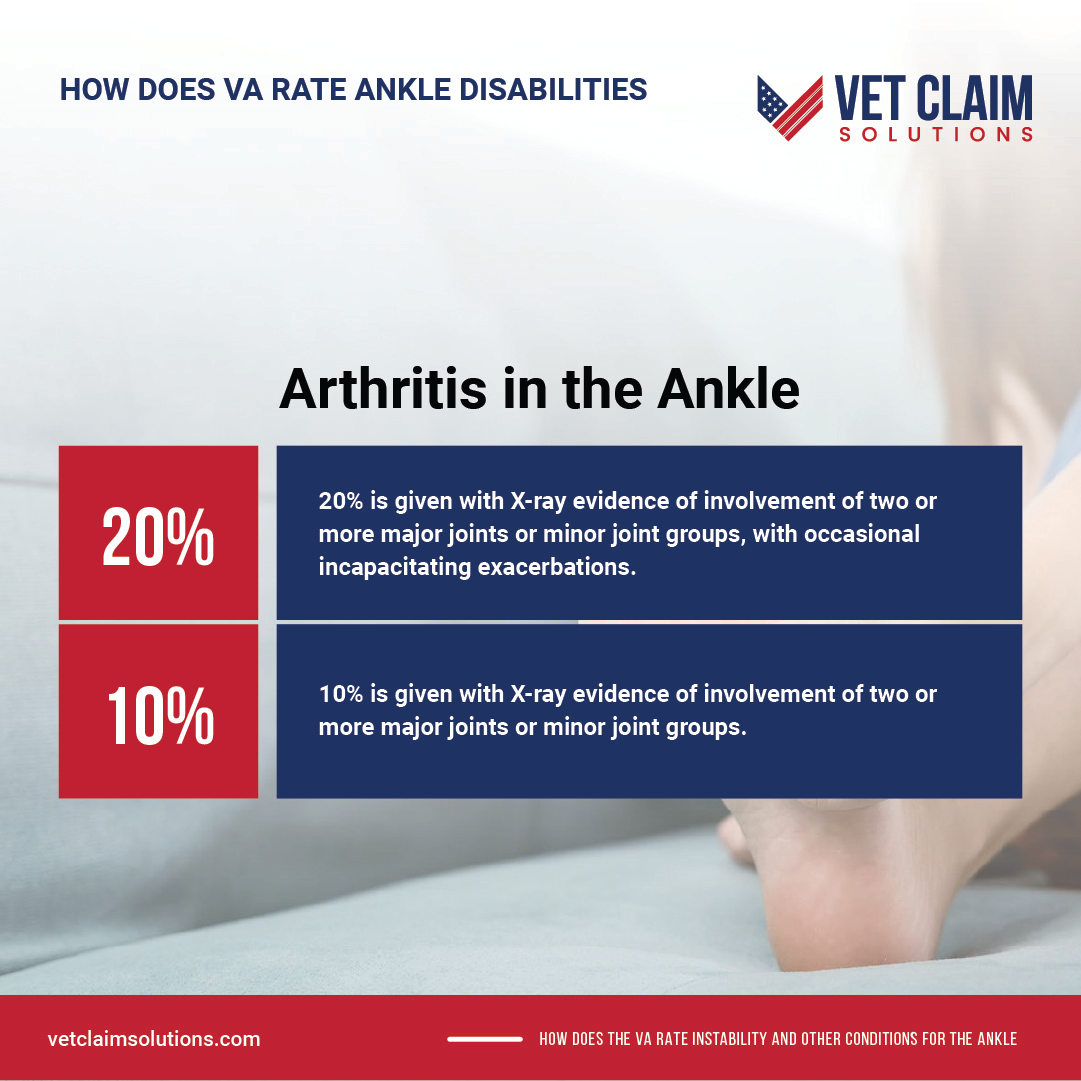
For osteoarthritis in the ankle, X-ray evidence of involvement of two or more major joints or minor joint groups must be rated.

20% is given with X-ray evidence of involvement of two or more major joints or minor joint groups, with occasional incapacitating exacerbations.

10% is given with X-ray evidence of involvement of two or more major joints or minor joint groups.
Rheumatoid arthritis
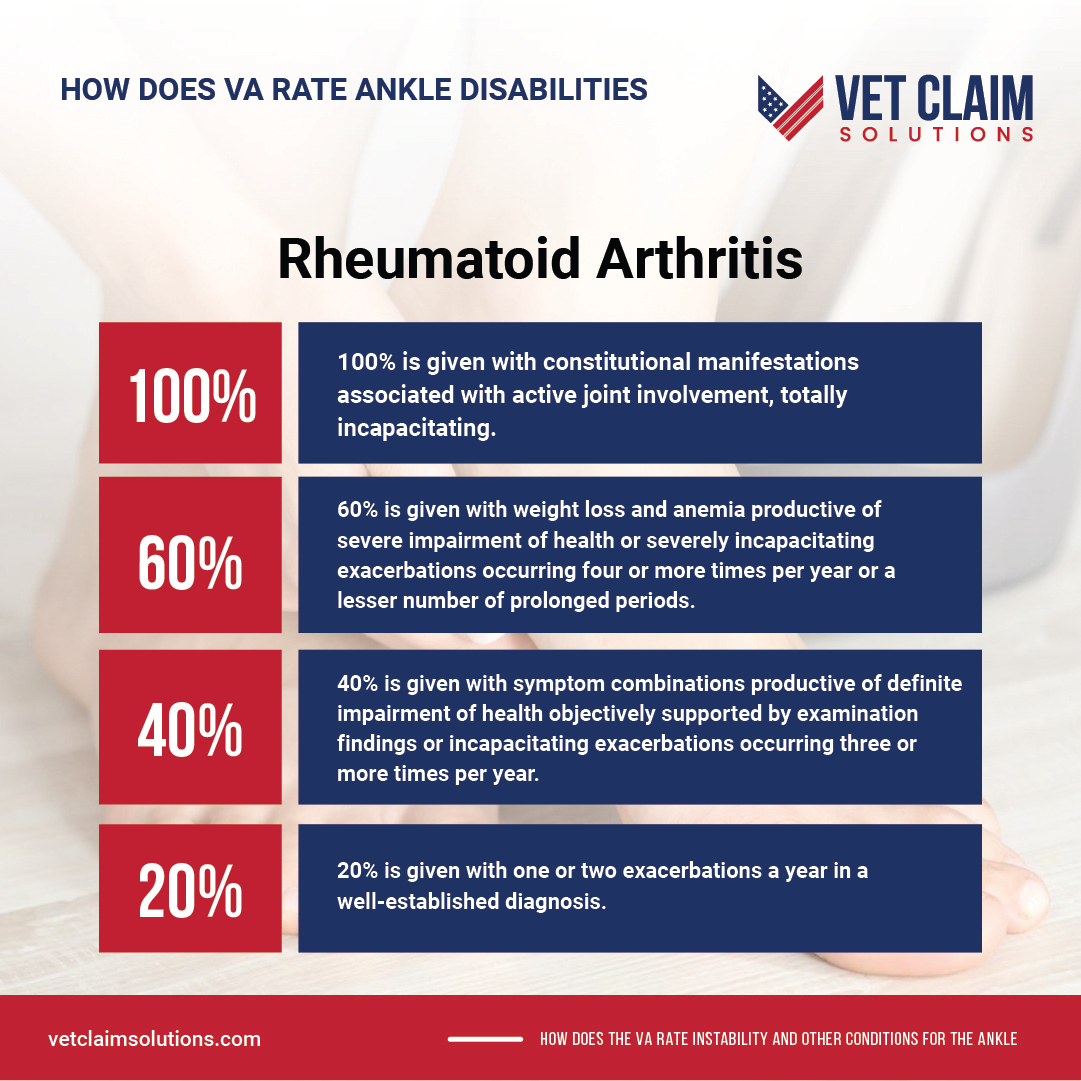
For rheumatoid arthritis, the criteria for rating is based on the number of incapacitating episodes a veteran has due to their condition.

100% is given with constitutional manifestations associated with active joint involvement, totally incapacitating.

60% is given with weight loss and anemia productive of severe impairment of health or severely incapacitating exacerbations occurring four or more times per year or a lesser number of prolonged periods.

40% is given with symptom combinations productive of definite impairment of health objectively supported by examination findings or incapacitating exacerbations occurring three or more times per year.

20% is given with one or two exacerbations a year in a well-established diagnosis.
Ankle Instability
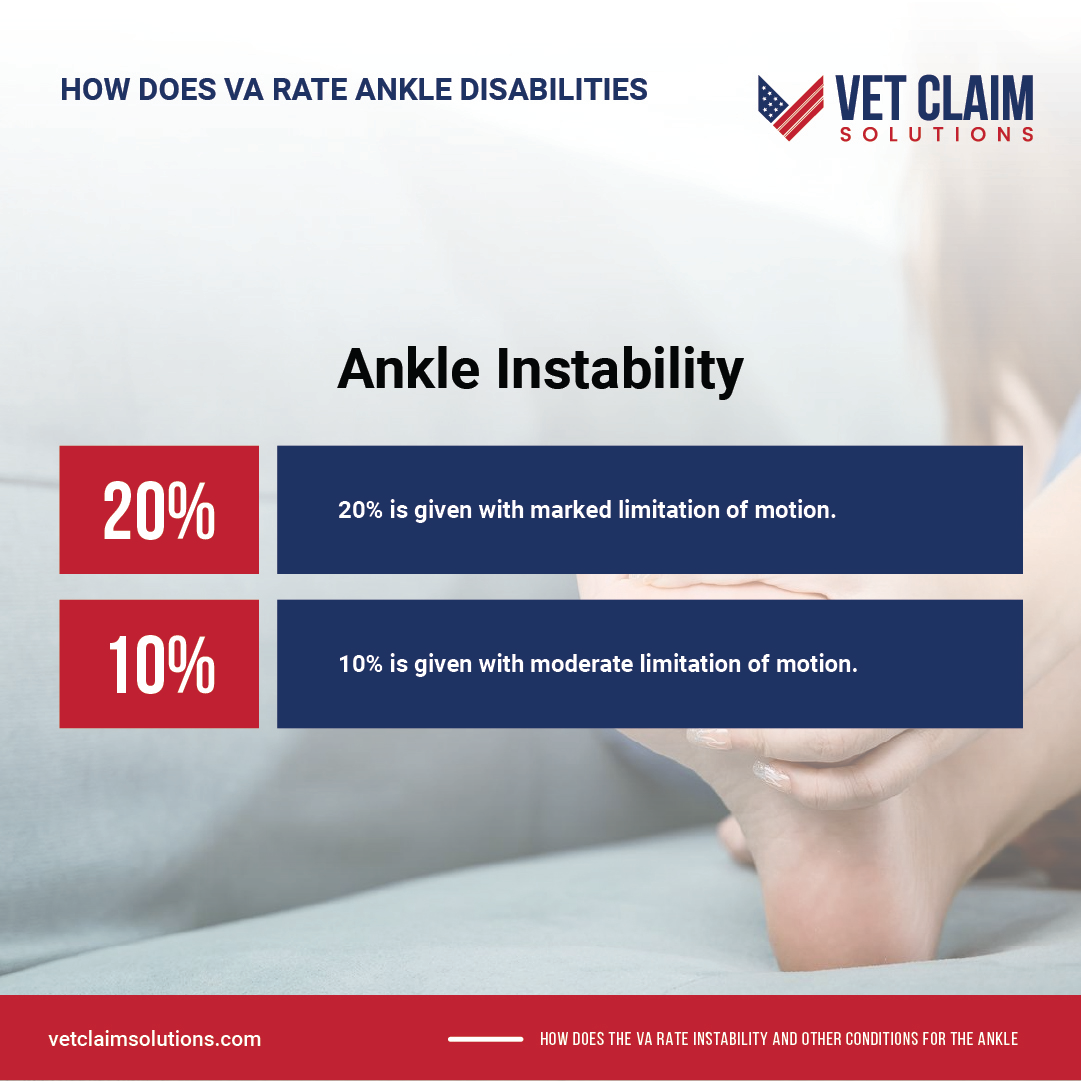
Under the diagnostic code (DC) 5271, ratings for ankle instability are given depending on the degree of limitation of motion.

20% is given with marked limitation of motion.

10% is given with moderate limitation of motion.
How to Establish Service Connection for Ankle Disabilities
To prove service connection for a veteran’s ankle disability, there are three main ways:

Direct service connection
To approve a direct service connection, the veteran must provide evidence of their current diagnosed ankle condition, an in-service event, injury, or illness, and a medical nexus linking the current ankle condition to the in-service incurrence. The claim for VA disability benefits can be submitted through VA Form 21-526EZ, which can be sent via mail or electronically on VA’s website.

Secondary service connection
A secondary service connection is when an additional condition has resulted from a separate previously service-connected condition, such as an ankle disability. In this case, a veteran must submit proof of their current diagnosed secondary condition and its nexus to their service-connected ankle condition to be approved for benefits. A nexus letter written by a medical professional who can argue the connection between your ankle injury and the existing service connected condition may be needed.

Service connection by aggravation
In some instances, VA will recognize conditions that existed before entry into the service but were made worse or “aggravated” by service. According to 38 CFR § 3.306, an increase in disability during service will be considered an aggravation of a pre-existing injury or disease unless it can be proven that the increase is due to the natural progress of the condition.
Therefore, veterans should submit evidence proving their current aggravated condition and its link to their service-connected ankle disability to successfully acquire service connection by aggravation.
A claim for any of the three types of service connection should include current medical records and opinions of medical professionals to support the veteran’s claim. VA must assist veterans in obtaining evidence that is necessary for their claims.
Common Secondary Conditions Associated with Ankle Injuries

Plantar Fasciitis
When the plantar fascia, a thick band of tissue running across the bottom of the foot, becomes inflamed due to overstretching or tearing from an acute ankle injury, it can lead to plantar fasciitis. This is because the plantar fascia absorbs shock and supports the foot arch.

Knee Pain
If an ankle injury is not treated, it can cause pain to radiate to the knees due to changes in walking patterns that involve placing more pressure on the knee joints.

Hip Pain
Adding strain due to an ankle injury may affect the hips, resulting in various kinds of hip pain.

Depression
The impaired mobility caused by an ankle injury can also lead to depression and decreased quality of life.

Anxiety
A person may develop anxiety due to chronic ankle pain, as research from the American Orthopedic Foot and Ankle Society shows.
These secondary conditions can immensely affect a person with an ankle injury, and it is important to be aware of them to seek the proper help and treatment. It is also essential to receive regular checkups from your doctor to help keep track of any changes that might occur due to an ankle injury.
Compensation and Pension (C&P) Exams for Ankle Conditions
Compensation and Pension (C&P) Exams will most likely be scheduled by the VA regarding a claim for an ankle issue. This exam aims to gain further insight into the veteran’s ankle condition that was applied for. This assessment will typically be conducted by either a VA examiner or an appointed VA-contracted examiner. The exam may involve a physical examination of the veteran, if possible, or an interview regarding the condition.
Veterans must attend any C&P exams that the VA requests even if the veteran believes the submitted evidence will meet the requirements to establish service connection and determine severity. Though it may seem a C&P exam is not needed, veterans must attend them, as VA may deny the claim if these tests are not completed. The exams provide important information that can help determine whether a veteran’s ankle condition is service-connected.
TDIU and Conditions Secondary to Ankle Disabilities
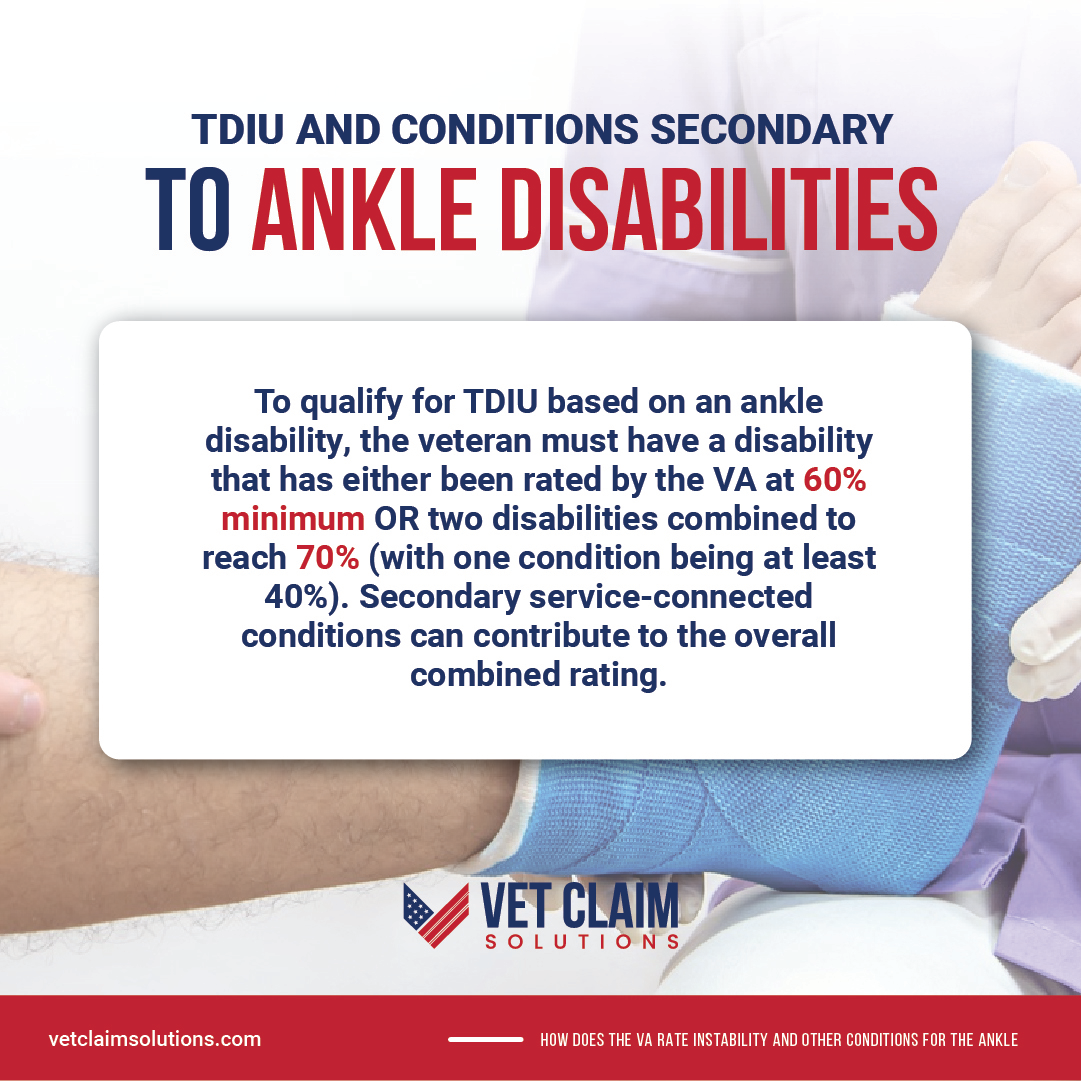
Secondary service connection can also be important in TDIU (Total Disability on Individual Unemployability) for veterans with ankle injuries and disabilities. To qualify for TDIU based on an ankle disability, the veteran must have a disability that has either been rated by the VA at 60 percent minimum OR two disabilities combined to reach 70 percent (with one condition being at least 40 percent). Secondary service-connected conditions can contribute to the overall combined rating. Veterans who are currently rated for ankle conditions can look to add new health problems as secondary conditions to that in order to reach TDIU eligibility.
Extra schedular TDIU may also be available for veterans whose ankle disability does not meet the necessary criteria for schedular TDIU. In this case, extra evidence must be provided proving their ankle disability prevents them from maintaining substantially gainful employment. This can include evidence such as medical records and the opinions of medical professionals that demonstrate how the ankle disability significantly impairs their daily activities or lack of current job offers due to the disabling effects of the condition.
Need help filling Instability and Other Conditions for the Ankle.

If you’re looking to file a claim for ankle instability and other ankle conditions, the Vet Claim Solutions can help. We understand that ankle injuries can disrupt your everyday life, and we are here to help make filing for benefits as simple as possible.
Our team of experienced professionals can help you receive the benefits you may be eligible to your ankle injury. We specialize in filing claims for veterans suffering from instability and other ankle conditions, such as arthritis, tendon injuries, and fractures. Contact us today to learn more about how we can help you receive the benefits you deserve.
Conclusion
Veterans with ankle disabilities may be eligible for disability compensation if the veteran can prove that their military service either caused or impacted their ankle condition. By gathering evidence to support their ankle injuries, veterans can make a stronger case for approval of their ankle claim. With the right strategy and preparation, veterans with ankle disabilities can be rated for these conditions and greatly increase their overall disability rating and increase their monthly compensation.
FAQ’s
1. Can you get a disability for chronic ankle instability?
Yes, it is possible to receive disability benefits if you have been diagnosed with chronic ankle instability. You must provide evidence of your condition to the VA and document how it affects your daily life. The VA assesses applicants according to their combined rating, which must be at least 60% or two disabilities, with one being 40%.
2. What is considered ankle instability?
Ankle instability is a condition that is caused by frequent or chronic sprains or damage to the ligaments and tendons in the ankle joint. Symptoms may include pain, swelling, instability, or a feeling like your ankle is giving way.
3. What is the range of motion for ankle VA disability?
The VA assesses a range of motion for ankle disabilities using the following scale: 0% (inability to move), 10% (slight-to-moderate difficulty), 20% (difficulty with a full range of motion), 30% (inability to move in any direction) 40% (complete inability to move). The ratings are based on the severity of the disability and how it affects daily activities.
4. What is the VA Disability Rating for ankle joint injury?
The VA Disability Rating for an ankle joint injury depends on the severity of the disability and whether it is service-connected or not. The VA assigns disability ratings on a scale from 0 to 20 percent, with higher percentages indicating more severe disabilities.
5. What military service qualifies for VA disability compensation benefits?
VA awards disability compensation to service members who have served during a period of war and/or in a campaign or expedition for which a campaign medal has been authorized. Additionally, individuals who served on active duty may be eligible for certain types of benefits regardless of their specific time of service.
6. What are VA Benefits Available for Injury Caused by Ankle Arthritis?
Veterans whose injury caused ankle arthritis may be eligible for Total Disability Individual Unemployability (TDIU) benefits. To qualify for TDIU, veterans must have a disability rated at least 60 percent or two disabilities combined to reach 70 percent (with one condition being at least 40 percent).


